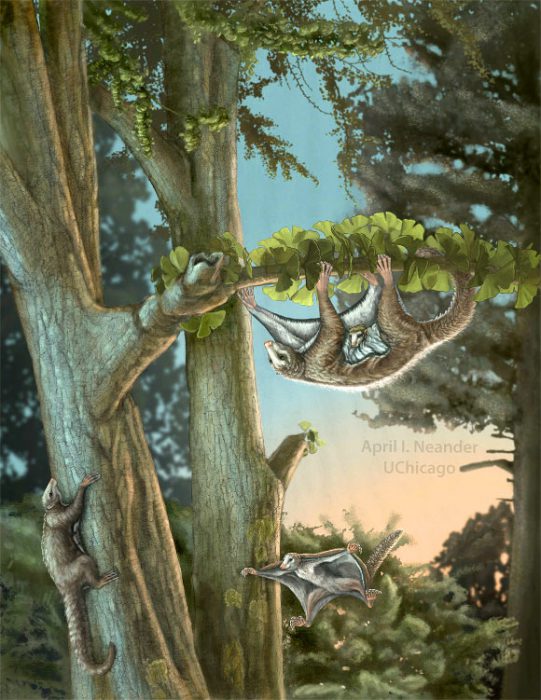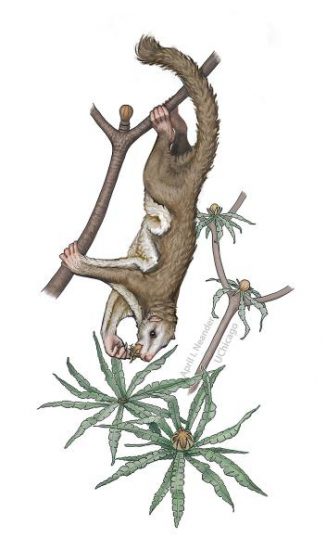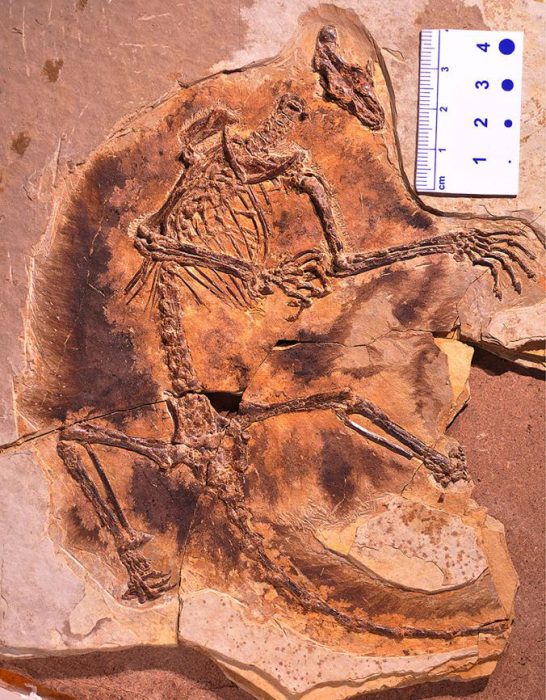For about 150 years, humans understood the prehistoric world as a strange place ruled by giant, terrifying creatures. Huge reptiles were lords of the landscape. Mammals were tiny and barely noticeable. Birds as we know them didn't even exist. And some of the insects were so large, they'd swat at you. The word dinosaur even means "terrible lizard." What more do you need to know about this frightening time? Just look!
AAAHHHHHHH!!! Anyway...
Over the last few decades though, our understanding of the Mesozoic Era (a.k.a. the Age of Dinosaurs) has changed. Big time.
Yes, the dinosaurs were definitely the most dominant species, but they weren't all massive animals. Some were as small as a chicken, while others wore the same covering as chickens: feathers. So many, that some scientists like to say that the dinosaurs never truly died out: they just evolved into birds.
A world of mammals, too?
As for mammals, new fossils are constantly emerging to reveal the incredible variety these animals had, even during the dino-dominated Jurassic period. After all, did you ever think that the Mesozoic would have looked like this?

An artist's impression of a group of Maiopatagium furculiferum. (April I. Neander/University of Chicago)
That's the Maiopatagium furculiferum. These gliding mammals lived in the Jurassic about 160 million years ago. The creatures share some interesting similarities with modern flying squirrels and sugar gliders.
At 23 cm (9 inches) long, they were a similar size. In between each pair of fore and rear legs, the Maiopatagium had a soft, stretchy membrane. They could open up their limbs and use the membranes as a kind of parachute/wing to glide across the treetops from branch to branch.
This adaptation kept it safe from all of the dangerous carnivorous dinosaurs on the ground that would've been happy to have them as a snack. Speaking of food, its own teeth show that it probably fed on soft plant parts such as fruits and leaves.
The Maiopatagium furculiferum probably would've glided in a way that was similar to this modern flying squirrel. (Getty Embed)
We're just getting started
The fossils of the Maiopatagium furculiferum were discovered in China. This country has been full of recent thrilling prehistoric discoveries. Same with parts of Canada, too. The fossils just keep on coming! That's why experts think that we're far from done learning more about just how complex animals life was in the Mesozoic.
“I expect we’re going to keep finding more strange things,” said Dr. Guillermo W. Rougier of the University of Louisville to the New York Times.
We sure hope so, Dr. Rougier!
The sugar glider, a marsupial found in Australia and Indonesia, is another living creature that is... (Getty Embed)

...a lot like the Maiopatagium furculiferum! (April I. Neander/University of Chicago)
 Scientists have revealed that this fossil belonged to a species of gliding mammals that lived alongside the dinosaurs. (Zhe Xi/University of Chicago)
Scientists have revealed that this fossil belonged to a species of gliding mammals that lived alongside the dinosaurs. (Zhe Xi/University of Chicago)









